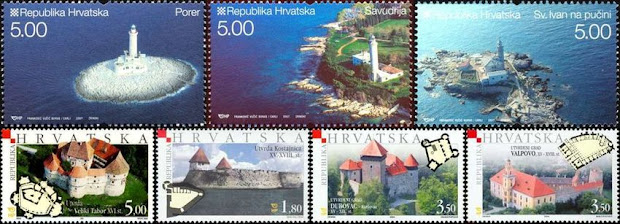It is conventional wisdom that Slavic tribes, and among them Croats, settled in Dalmatia in the 7th century. This thought is primarily based on the book De Administrando Imperio, written in the 10th century by Byzantine Emperor Constantine VII Porphyrogenitus. As Constantine wrote about things he thought that happened three centuries ago, some of his observations could be wrong.
Professor Neven Budak, for example, recently stated that there is no material evidence at all that Croats already lived in Dalmatia in the 7th or 8th century. He presented this "sensational discovery", as the paper Slobodna Dalmacija called it, at a conference organised by the University of Zadar.
 De Administrando Imperio is known to contain a lot of errors, so Budak's disovery is not as sensational as Slobodna Dalmacija suggests. Much more surprising is the absence of further discussion in Croatia. I couldn't find the proceedings of the conference and read what Budak exactly said, but his findings should provoke some reactions in the small field of Croatian historians. Right?
De Administrando Imperio is known to contain a lot of errors, so Budak's disovery is not as sensational as Slobodna Dalmacija suggests. Much more surprising is the absence of further discussion in Croatia. I couldn't find the proceedings of the conference and read what Budak exactly said, but his findings should provoke some reactions in the small field of Croatian historians. Right?
 Two painters put the arrival of the Croats on canvas. The first and most popular painting is by Oton Iveković. I can see why. Iveković portrayed the Croats as a well-dressed, civilised people, a kulturni narod as Croats like to say. Celestin Medović's painting, however, shows the Croats as a wild, barbaric and warlike tribe that fought its way to the Ardriatic Sea. We will probably never know how they looked like, but we might some day get an anwer to the question when they saw the sparkling Adriatic Sea for the first time.
Two painters put the arrival of the Croats on canvas. The first and most popular painting is by Oton Iveković. I can see why. Iveković portrayed the Croats as a well-dressed, civilised people, a kulturni narod as Croats like to say. Celestin Medović's painting, however, shows the Croats as a wild, barbaric and warlike tribe that fought its way to the Ardriatic Sea. We will probably never know how they looked like, but we might some day get an anwer to the question when they saw the sparkling Adriatic Sea for the first time.
Professor Neven Budak, for example, recently stated that there is no material evidence at all that Croats already lived in Dalmatia in the 7th or 8th century. He presented this "sensational discovery", as the paper Slobodna Dalmacija called it, at a conference organised by the University of Zadar.
 De Administrando Imperio is known to contain a lot of errors, so Budak's disovery is not as sensational as Slobodna Dalmacija suggests. Much more surprising is the absence of further discussion in Croatia. I couldn't find the proceedings of the conference and read what Budak exactly said, but his findings should provoke some reactions in the small field of Croatian historians. Right?
De Administrando Imperio is known to contain a lot of errors, so Budak's disovery is not as sensational as Slobodna Dalmacija suggests. Much more surprising is the absence of further discussion in Croatia. I couldn't find the proceedings of the conference and read what Budak exactly said, but his findings should provoke some reactions in the small field of Croatian historians. Right? Two painters put the arrival of the Croats on canvas. The first and most popular painting is by Oton Iveković. I can see why. Iveković portrayed the Croats as a well-dressed, civilised people, a kulturni narod as Croats like to say. Celestin Medović's painting, however, shows the Croats as a wild, barbaric and warlike tribe that fought its way to the Ardriatic Sea. We will probably never know how they looked like, but we might some day get an anwer to the question when they saw the sparkling Adriatic Sea for the first time.
Two painters put the arrival of the Croats on canvas. The first and most popular painting is by Oton Iveković. I can see why. Iveković portrayed the Croats as a well-dressed, civilised people, a kulturni narod as Croats like to say. Celestin Medović's painting, however, shows the Croats as a wild, barbaric and warlike tribe that fought its way to the Ardriatic Sea. We will probably never know how they looked like, but we might some day get an anwer to the question when they saw the sparkling Adriatic Sea for the first time.




0 reacties:
Post a Comment